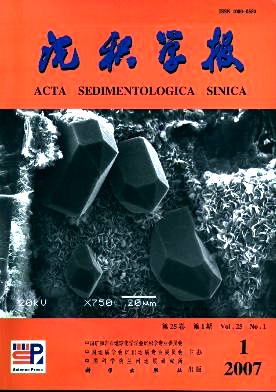Relationship Between BaseLevel Cycles and Hiberarchy of Reservoir Flow Units of Lower Shihezi Formation in Daniudi Gas Field
- Received Date: 1900-01-01
- Rev Recd Date: 1900-01-01
- Publish Date: 2007-02-10
-
Key words:
- baselevel cycle /
- reservoir flow unit /
- hiberarchy /
- Lower Shihezi Formation /
- Daniudi gas field
Abstract: A correlation between sandbodies and analysis of their spatial distribution within an isochronous stratigraphic correlation framework, which is established, based on identification of mediumterm and shortterm saselevel cycles in Lower Shihezi Formation in Daniudi gas field, according to the highresolution sequence stratigraphy concept. Flow units are subdivided into A, B, C and D types in a downgrade order in terms of porosity, permeability and gas saturation parameters, which are obtained from analyzing the datum cycles and hierarchy of the flow units. In addition, types of barriers separating flow units, vertical superimposition and lateral separation patterns of sma
llsized flow units are analyzed and the relationship between the flow units and baselevel cycle is discussed. It is believed that: ①the vertical superimposition and lateral separation of sandbodies and flow units are directly controlled by various grades of baselevel cycles and A/S values; ②The baselevel cycles have directly controls over types, location, scale and lateral connection of vertical superimposition and lateral separation patterns of small –sized flow units; ③In the longterm LSC2 cycle, the types of flow units in a medium-term cycle tend to upgrade with increased accommodations and A/S values; ④In mediumterm and shortterm baselevel cycles, as accommodations and A/S values increase, flow units have deteriorated development and types, with less vertical thickness, shortened lateral extending distance and poor connections.
| Citation: | TANG Minan. Relationship Between BaseLevel Cycles and Hiberarchy of Reservoir Flow Units of Lower Shihezi Formation in Daniudi Gas Field[J]. Acta Sedimentologica Sinica, 2007, 25(1): 39-47. |






 DownLoad:
DownLoad: